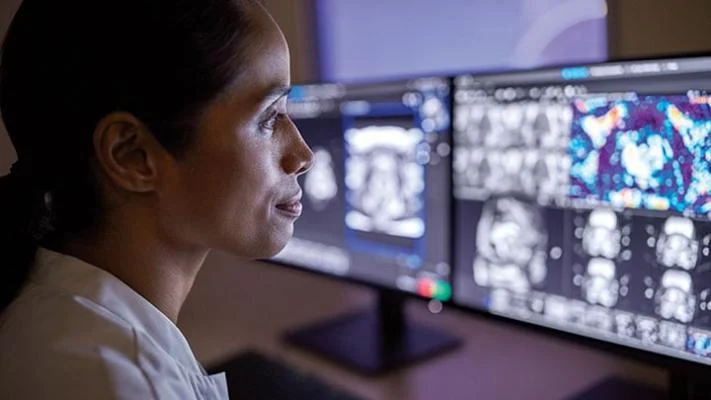Fortunately, modern digital tools offer powerful ways to address these challenges. Let’s explore key technologies that can revolutionize your imaging workflow.
1. Adopt Enterprise PACS Systems
A Picture Archiving and Communication System (PACS) allows healthcare providers to store, retrieve, manage, and share medical images digitally. Advanced PACS platforms, such as those offered by SepStream, come equipped with cloud integration, AI-powered analytics, and user-friendly interfaces.
Benefits of PACS systems include:
- Instant access to images from any location
- Seamless integration with EHRs
- Reduced need for physical storage
- Enhanced data security and compliance
- Faster reporting and collaboration
By deploying enterprise-grade PACS, hospitals can reduce turnaround times, enhance radiologist productivity, and improve diagnostic accuracy.
2. Implement Workflow Automation
Automating routine tasks like patient registration, scheduling, and report distribution can save valuable time and reduce errors. Workflow automation tools integrated into PACS and RIS (Radiology Information Systems) can:
- Trigger alerts and reminders for pending tasks
- Auto-assign studies to radiologists based on specialization or availability
- Generate templated reports for common procedures
Such automation ensures a smoother, more consistent experience for both staff and patients.
3. Enable Remote Access and Teleradiology
Digital solutions enable radiologists to access imaging studies remotely, which is especially helpful for emergency consultations or during off-hours. Teleradiology supports faster turnaround and enables healthcare facilities to leverage radiologist expertise across multiple locations.
Cloud-based PACS platforms like those from Seppi Technology Associates allow secure remote access while maintaining compliance with healthcare regulations such as HIPAA.
4. Utilize AI for Image Analysis and Workflow Optimization
Artificial Intelligence (AI) is increasingly being integrated into imaging systems to assist radiologists in identifying anomalies, prioritizing urgent cases, and even predicting disease progression.
AI can also be used to optimize workflows by analyzing usage patterns, identifying inefficiencies, and suggesting improvements. This results in:
- More accurate diagnoses
- Reduced fatigue and burnout among radiologists
- Better resource allocation
AI doesn’t replace human expertise—it enhances it.
5. Integrate Reporting and Communication Tools
A major bottleneck in imaging workflows is the time it takes to generate and communicate reports. Integrated reporting tools within PACS platforms allow radiologists to dictate or type reports directly while viewing images.
Additionally, automated notifications can alert referring physicians when a report is ready, speeding up decision-making. With platforms like sepstream.com, this integration is seamless and customizable according to clinical needs.
Best Practices for Implementing Digital Solutions
While the benefits of digital imaging systems are clear, successful implementation requires careful planning. Here are some best practices:
1. Assess Your Current Workflow
Before introducing new technologies, evaluate your existing processes. Identify pain points, bottlenecks, and redundant steps.
2. Choose Scalable and Customizable Systems
Not all PACS solutions are created equal. Choose platforms that are scalable, cloud-enabled, and tailored to your facility’s unique needs—like those provided by SepStream.
3. Train Your Staff
Adoption of digital tools only works when your staff is comfortable using them. Offer comprehensive training and ongoing support.
4. Ensure Regulatory Compliance
Data privacy and compliance are critical in healthcare. Make sure any digital solution you adopt meets standards such as HIPAA in the U.S. or GDPR in Europe.
5. Monitor and Optimize
After implementation, track key performance indicators (KPIs) like report turnaround time, patient wait time, and system uptime. Use this data to continuously improve your workflow.
Future Trends in Diagnostic Imaging Workflow
As technology continues to evolve, several trends are shaping the future of imaging workflows:
- Cloud-native PACS solutions: Offer greater flexibility and lower maintenance costs.
- Interoperability standards: Allow seamless data exchange between systems and organizations.
- Mobile diagnostics: Let patients access imaging results via apps or patient portals.
- Predictive analytics: Help anticipate imaging needs and patient volume trends.
Staying ahead of these trends can position your organization as a leader in digital healthcare delivery.
Final Thoughts
Improving diagnostic imaging workflow isn’t just about installing new software—it’s about transforming how care is delivered. With the right digital tools and a strategic approach, healthcare providers can enhance efficiency, reduce errors, and ultimately deliver better outcomes.
Solutions like those from SepStream are at the forefront of this transformation, offering affordable, feature-rich PACS systems designed for modern healthcare needs. Whether you’re managing a single radiology practice or a large hospital network, investing in advanced imaging solutions is a step toward a smarter, faster, and more connected future.

